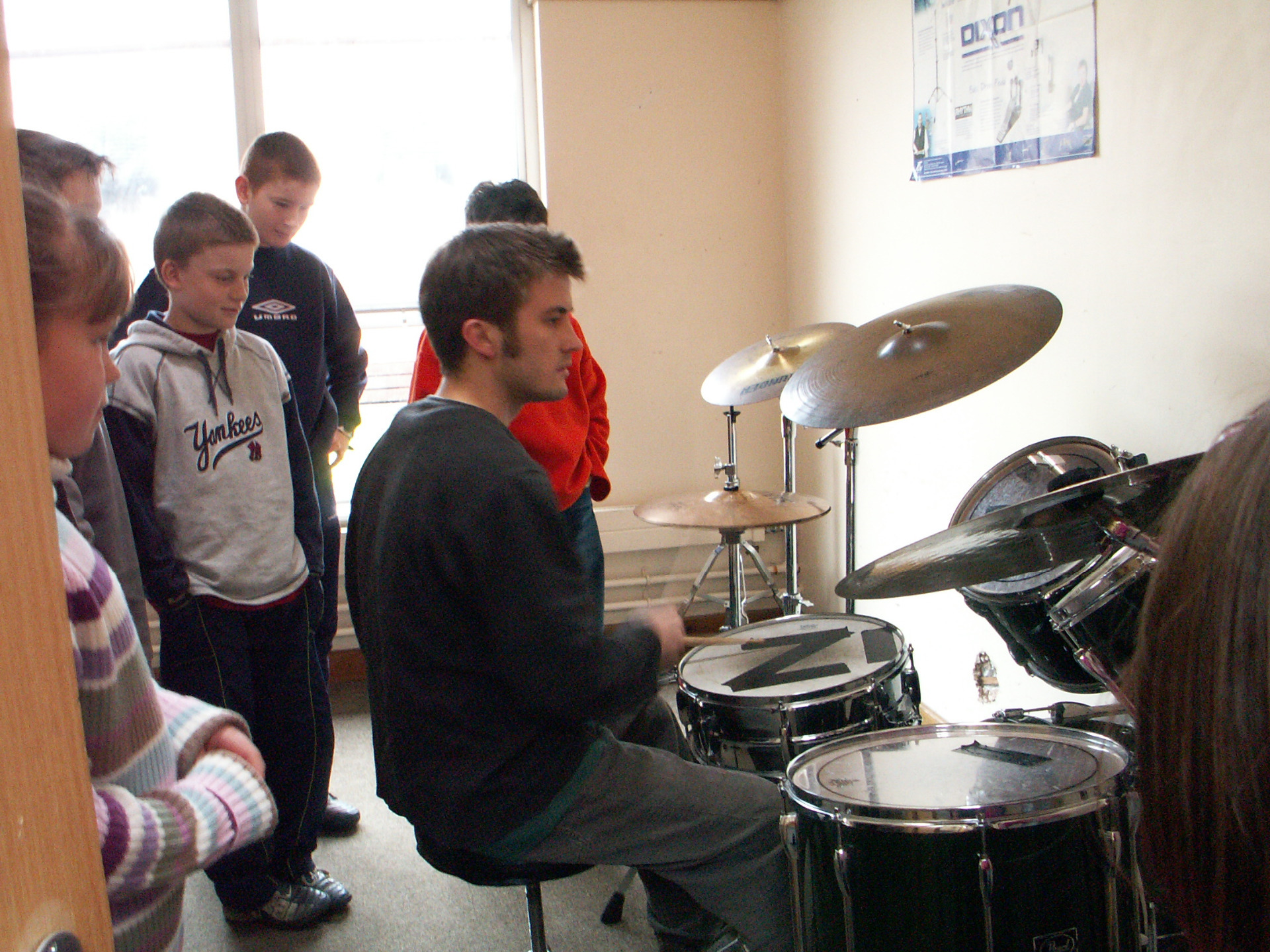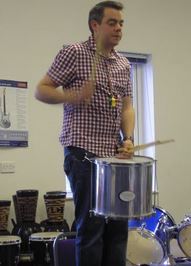Drums of the World
Posted on 13th May 2015 at 14:30

It’s International Drum Month, and to celebrate, the MWC team have been exploring the world of drums – and the drums of the World.
There are literally hundreds, if not thousands, of types of drum. They differ in sound, playing technique and materials, but also in their cultural and musical significance. Some drums have developed for dancing or performance music, others are vehicles for group experiences, meditative, celebratory and even military use.
What is a drum?
A drum is a member of the percussion family of instruments. It is classed as a membranophone, which is a great word that sounds like a species of dinosaur!
What it actually means is that a drum consists of a membrane or skin stretched over a shell or vessel.
Drums can be made from anything – wood, metal, ceramic, plastic or even plants such as gourds. Junk percussion has become popular too, with instruments made from discarded and recycled materials. Sound is produced by hitting the membrane either with the hands, or with beaters or drumsticks.
Most drums are classified as non-tuned percussion. This means they are of indefinite pitch, they don’t play any particular notes. But some drums are tuned to definite pitches. Orchestral kettledrums, (timpani) are always scored to have specific notes, and Indian tabla drums are not just tuned, they play different pitches depending on the technique used to strike them. As the sound decays, the player applies pressure with the heel of the hand, which changes the pitch.
When the tabla is practised as a solo instrument it will not necessarily be tuned, but when used as an accompanying instrument it will be tuned to specific notes, normally the first note of the octave, known as sadja or sa in Indian music (the tonic). The range of notes is fairly limited, so depending on the key of the music, the drum may be tuned to the fifth (pa) or fourth (ma).
The drum is tuned using wooden pegs called gattas. These are used to increase and decrease the tension of the skin. Pulling the gattas down increases the pitch as the skin becomes tighter, just like winding up a violin string will make its pitch higher. Pulling them up decreases the pitch. This mechanism is common in tuned drums – orchestral kettledrums have a modernised but similar system.
"I do love the tabla. It’s so resonant it’s almost vocal, and the Tintal rhythm patterns add hypnotic energy to Indian music. I can’t get enough!"
Matthew Forbes, Cellist, Composer and Workshop Leader

Drums are found throughout the world and in all world music. Africa, Latin America, Asia and Europe all have their own drum music, and each has a huge variety of percussion instruments.
Early evidence of drums include an image of a man-sized bass drum on a Sumerian vase which dates from around 3000 years BCE, and at least four sizes of drums were used in ancient Mesopotamia. Instruments from Ancient Egypt dating to around 1800 BCE have been discovered, and drums are mentioned in one of the earliest Chinese poems dating from 1135 BCE.
Drums seem to have reached Europe during the Crusading Era in the 12th century, where often they were played with a stick in one hand while the musician played a small pipe at the same time. This combination was often used for accompanying dance. Much more significant to the orchestral world was the arrival of the Arabian naker or naqqarah in the 13th Century, a small kettledrum, a modern version of which is now found in most symphony orchestras.

When most of us think of drums, the first thing that springs to mind is the drum kit (or drum set, as the American’s call it). A typical drum kit includes a snare drum, tom-toms, bass drum and cymbals such as hi-hat and ride. No pop or rock band is complete without one.
Check out this video to find out about the history of the modern drum kit…
Drums are played in so many other musical groups too. Brazilian samba is music for dancing, played in ensembles of many percussion instruments. Samba is an energetic music that immediately creates a positive, carnival atmosphere, and it’s a great way in to ensemble playing. It’s also a proactive way to start a workshop with participants who may not be confident instrumentalists.
"The starting point with all of my workshops, composition or otherwise, is drumming. That’s the way in, and the way into the students understanding that I’m an expert. It’s accessible; everybody can hold a drumstick; and I’ve found that it’s a great way to get everybody involved and working towards the same goal."
MWC Workshop Leader Chris Woodham

Read more about Samba music in our post, The Samba Workshop – How it Works.

For MWC Founder and Artistic Director, Maria Thomas, the drum is the perfect instrument:
"They are fabulous. It’s easy to get a sound from a drum, but extremely difficult to become a real drummer, whether you’re playing drum kit, djembes or tabla. Playing drums is very physical. It’s a great feeling to feel the vibrations of a drum passing through your body. I really enjoy playing djembes as part of a drumming circle. The energy and intricate rhythms are so powerful."
The djembe is an interesting hand-drum from West Africa. The drum was used by storytellers and healers, as well as for ceremonial occasions. It is interesting to note that the power of musical vibration was considered significant for much more than entertainment purposes in so many ancient cultures – a holistic view that is once again becoming integrated into our awareness. You can read much more about the djembe and the benefits of drumming in our African drumming blog.
Share this post:




